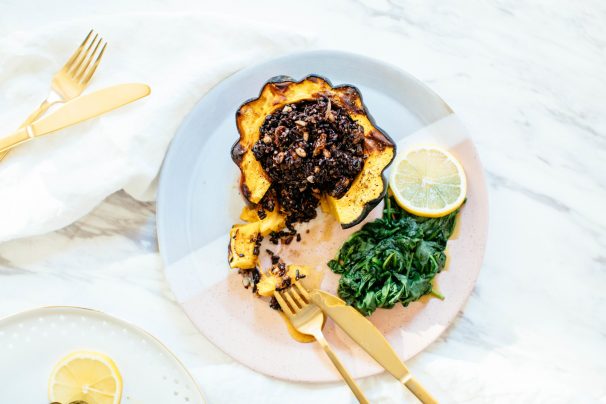

Acorn squash nutrition baked carbohydrates free#
Studies show that as a high-antioxidant food it can help fight oxidative stress and free radical damage, which contribute to signs and aging and chronic disease development. One of the greatest benefits of hubbard squash nutrition is its supply of carotenoid antioxidants. Great Source of Antioxidant Vitamin A/Beta-Carotene

Today they are often used ornamentally during the fall for Halloween and Thanksgiving decorating. Hubbards are thought to be native to Central and South America. It’s typically harvested in the autumn and can remain fresh and edible for many months through the fall and winter even without refrigeration. It’s a warm-season annual crop that grows on vines and trails along the ground or climbs up structures. Oftentimes the outside rind/skin is lumpy and bumpy.Īs a member of the winter squash family, hubbard squash is technically a fruit and not a vegetable, however it’s treated more like a veggie.

It has a golden orange center that becomes soft and sweet when cooked. Hubbard squash ( Cucurbita maxima) is a large squash with a gray/blue skin. It’s chock-full of nutrients, including vitamin C and beta-carotene/vitamin A, and it makes a great addition addition to soups, casseroles, baked goods, pasta dishes and more. What does hubbard squash taste like? It’s described as having a mild, sweet, nutty and slightly savory taste. Did you know that within the winter squash family there are more than 15 varieties of edible squashes that are commonly eaten? While most people are familiar with types like butternut, delicata and acorn squash, there’s a lesser-known variety that you should get to know: hubbard squash.


 0 kommentar(er)
0 kommentar(er)
